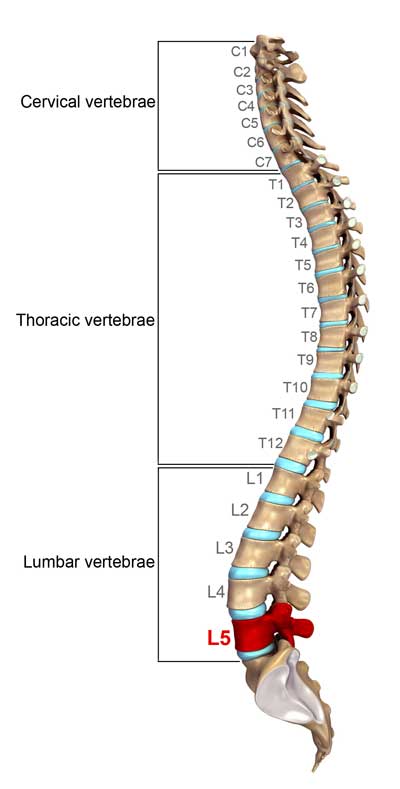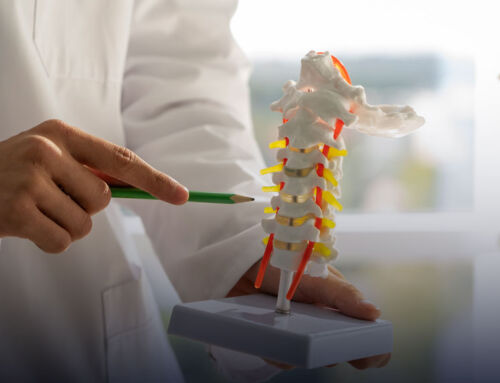Have you ever stepped out of bed in the morning and had intense pain radiating down your leg? Or had lower back pain that won’t let up? These symptoms are caused by impingement on your sciatic nerve.
Even if the pain is in your leg, the issue normally begins in your spine. The pain can come and go, but there’s no reason to live with it. Learn more about this condition and how we can help it below. Let’s start by learning more about the sciatic nerve itself:
THE SCIATIC NERVE – THE BASICS
The size and complexity of this nerve means that nerve pain can have several causes. “Sciatica” isn’t a diagnosis but rather a symptom of an underlying condition. Before we describe the condition, let’s learn more about the pain you may be feeling.
What is Sciatic Nerve Pain?
In the last section we described how the sciatic nerve originates from roots in the lower spine. These nerve roots can become pinched, which will result in intense pain that runs down the entire length of one or both legs. So while the pain you feel is in your leg, the cause of the pain may be in your spine. Most people find this pain to be intolerable, sometimes excruciating. And since they may not understand the cause of their pain, they become frustrated when they’re unable to manage it.
So how do you know if you have sciatica? Most often the symptoms are
- Shooting pain the back of the leg and/or lower back
- Numbness or tingling in your legs
- Trouble moving or staying active
- Stiffness in your feet
- Pain during the night
- Nagging pain after sitting or standing for a long time
The cause of the pain, numbness, tingling, and weakness depends on where the nerve is pinched. For example, symptoms in your foot and ankle indicate nerve impingement near lumbar segment 5 (L5).
What Causes Sciatic Nerve Pain?
Disc Herniation
The vast majority of sciatic nerve pain is caused by a herniated disc (also known as a slipped disc or a ruptured disc). This means a disc in the spine has cracked or torn, causing it to protrude into the spinal canal. This protrusion can pinch the sciatic nerve, which sends pain signals down the associated leg.
Piriformis Syndrome
The piriformis muscle is located in the buttock region. When the piriformis muscles spasm , it can irritate the nearby sciatic nerve and cause pain, numbness, and tingling along the back of the leg and into the foot.
Spinal Stenosis
Spinal stenosis is a narrowing of the spine’s passageways. This narrowing causes the nerves to become compressed, which can result in pain, tingling, weakness, loss of balance, and immobility. The nerve compression of spinal stenosis can cause sciatic leg pain, which is usually brought on by activities like standing and walking.
Spondylolisthesis
Spondylolisthesis is a condition wherein a vertebra slips forward over an adjacent vertebra. This displacement causes spinal nerve root compression and often results in sciatic leg pain. Spondylolisthesis is usually caused by spinal degeneration, trauma, or physical stress.
How is Sciatic Nerve Pain Treated?
Chiropractor/Massage
Chiropractors and massage therapy will focus on relieving the muscle tension in the sensitive area and also re-aligning the spine to reduce impingement and irritation. In some cases, this will provide short or even long-term relief, but in the cases of herniation, stenosis, and spondylolisthesis, these treatments may only temporarily alleviate the symptoms.
Pain Medication
Over-the-counter or prescription pain medications are usually effective in relieving sciatica pain. These medications can reduce the inflammation contributing to the pain, which can offer short-term relief. In the cases of severe pain, muscle relaxants or narcotic medications can help offer quick but temporary relief.
Epidural Steroid Injections
For severe sciatic nerve pain, an epidural steroid injection in the area around the nerve can reduce inflammation and affect relief. Unlike oral pain medication, these injections are made directly into the inflamed area. The relief from these injections helps you resume your normal range of activities and allows you to move forward with long-term physical therapy.
Physical Therapy
Long-term relief from sciatica pain will most likely involve some form of physical therapy. Chiropractors, medications, and injections can provide relief from pain symptoms, but physical therapy will help promote the muscle balance and physical conditioning to maintain a pain-free life in the long term.
Surgery
Surgery is always a last resort for managing sciatic nerve pain and should only be explored after chiropractic treatments, pain medication, injections, and physical therapy have failed to provide relief. If your pain is persistent and preventing you from engaging in daily activities, your doctor may explore a surgical option.
Can Sciatica Be Managed with Home Exercise?
Before we talk about home pain management, it’s important to stress again that sciatica is a symptom and not a diagnosis. While some of these home remedies can help you temporarily manage or alleviate the pain, you should see a physician to determine the cause of the sciatic nerve pain. He or she will help you outline a long term treatment plan so your pain doesn’t return or become permanent.
Activity/Stretching
Light stretches and isometric workouts can help relieve the pain from sciatica while also improving your general health or strength. Consult with a physical therapist to learn which exercises are beneficial and to make sure proper form is used.
Heat
Heating pads, such as those found at most drug stores, can provide temporary relief. A heating pad placed on the lower back and left on low/medium heat for 20 minutes can help you manage the pain. This can be repeated several times a day as needed.
Diet & Lifestyle
To combat inflammation and improve your odds of feeling better more quickly, make sure to eat a nutrient-dense healing diet, avoid smoking/using recreational drugs, and get exercise and good sleep.




